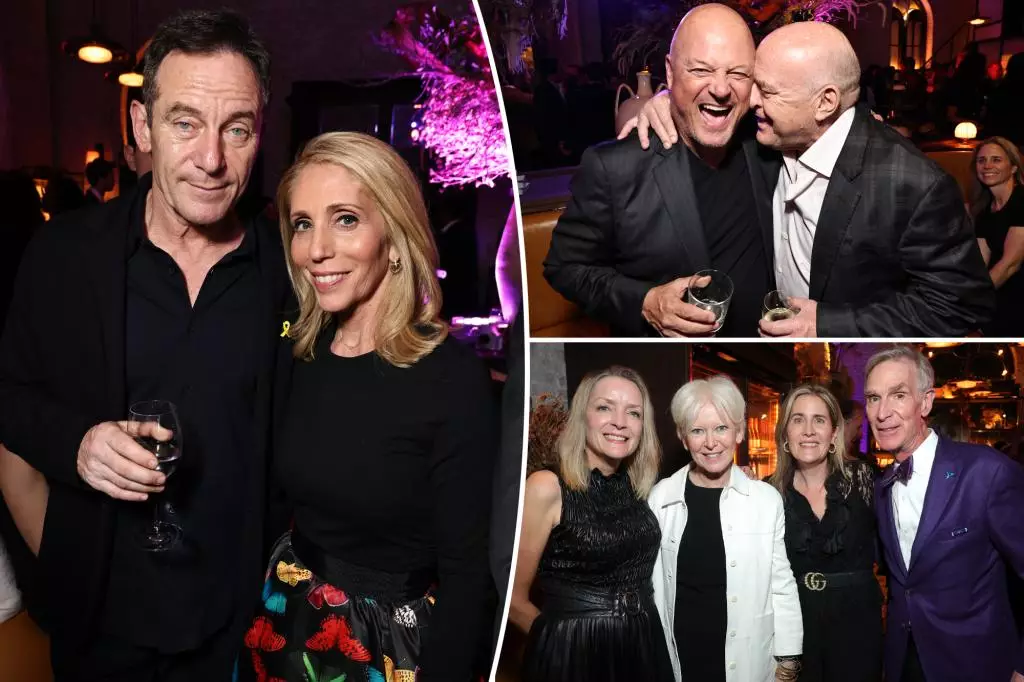The White House Correspondents’ Association (WHCA) dinner, often dubbed a crossroad of entertainment and political clout, can sometimes feel like an exclusive conclave reserved for the glitterati. However, this year’s celebration took a refreshing detour from the customary A-list roster, revealing that the true allure lies not just in headliners but in unexpected encounters that blend the mundane with the extraordinary. The pre-parties, especially, transformed the Washington, D.C. social scene into an electrifying mix of celebrity and influential politics, reminding us that sometimes the real stories unfold off the main stage.
This year’s festivities were another testament to the interconnectedness of Hollywood and Washington. “The White Lotus” star Jason Isaacs emerged not just as a media darling but as a confluence of artistic ambition and civic duty, making headlines for his dual role as an actor and an advocate for the arts. His presence at the UTA soirée was indicative of the evening’s vibrant energy, underscored by an unexpected discuss of “romances” and “arguments” on set. Isaacs was embraced by both fans and prominent DC journalists like Dana Bash, which illuminated the evening’s festive atmosphere – one where art, politics, and the public converge.
Pivotal Conversations Amidst the Music
Amidst the pulsing beats of a DJ spinning contemporary tracks, engaging conversations created an internal rhythm that rivaled the external music. Senator Amy Klobuchar mingled with UTA board member Jay Sures, a figure whose influence in shaping media narratives cannot be overstated. This meeting of minds represents a microcosm of larger dialogues happening across the nation—ones focused on information dissemination in an era of rapidly changing technologies and veracity. The presence of media heavyweights such as Anderson Cooper and Chuck Todd underscored the importance of these informal networks in shaping public perception.
As Bill de Blasio and activist Nomiki Konst bantered with laughter, we glimpsed the enigmatic charm of political camaraderie enveloped in shared passions. The community spirit intertwined with both the tension and joy embodied by actors like Michael Chiklis and Dean Norris. Meanwhile, the flashing cameras captured not merely posed pictures, but the micro-interactions that reflect a deeper insight—famous personas engaging in genuine human connection, navigating their identities in relationship to both fame and political weight.
Echoes of History in Modern Celebrations
Though our contemporary celebrations are rich with modernity, they often rest upon storied traditions. The Condé Nast affair hosted in the sprawling City Tavern—an edifice steeped in history—evoked a sense of reverence for the past. Here, influential figures such as CAA’s Bryan Lourd and Condé Nast’s Roger Lynch did more than network; they participated in a historical continuity that binds decision-makers across generations. This juxtaposition of historic venue with modern aspirations creates a unique space where the past and present interweave, encouraging a reflection on how legacies are built and transformed.
Welcoming guests like Tom Cibrowski and Kevin O’Leary, the gathering emphasized an intriguing mélange of voices directly engaged with the public discourse. Their mingling not only entailed social positioning but portended strategic conversations likely to ripple out through their respective platforms, thus shaping public narratives. Political analysts like Michael Steele and journalists such as Andrea Mitchell brought credibility and insight to the evening, demonstrating artful conversations about pressing national issues.
A New Era of Inclusive Revelry
As the evening continued, an insatiable thirst for community sparked wave after wave of receptions hosted by various organizations and entities. Innovative gatherings drew potent figures from Crooked Media to the Daily Mail into synergistic frays that bordered on a renaissance of media engagement. As events like the newly introduced “New Media Party” spilled into the social fabric, it indicated a shift within the media landscape, where alternative voices and platforms are demanding equal attention—a trend that is as exciting as it is necessary.
Amidst this backdrop, the fashion parade at the WHCA dinner featured not only the expected ensemble of actors but also political stalwarts such as Lynda Carter, a reminder of the power of media personalities as platforms for political thought. Their roles transcend conventional boundaries, showcasing how present-day figures embody civic responsibility while still gracing red carpets and headlines.
Ultimately, this year’s WHCA celebration became a canvas showcasing the dialogue between art, politics, and public engagement. The blurred lines between influence and artistry invite us to reconsider how we perceive these gatherings—not merely as events, but as reflections of the socio-political narrative that curates our collective experience.

